What's New
Displaying results 3291 - 3300 of 4052
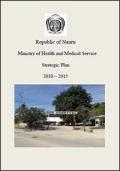
Resource | Publications,
The Health Strategic Plan outlines key strategies and activities that are in line with regional and international health initiatives. The plan is structured to incorporate key components of health system strengthening, primary health care and the Pacific initiative on Healthy Islands. The Strategic Plan has been developed after several consultations sessions with key units and staff of the Ministry and development partners. The plan is costed with the historical baseline budget amount and components for planning purposed. There are new activities proposed in the Strategic Plan that will need new funding and resource allocations.
The plan has the noble vision of "A Healthy and Peaceful Nation that values and supports human rights and dignity through the provision of quality health care and services". The plan also has linked mission and vision commitments and undertakings to the main vision statement. The HSP guiding principles relate to the regional and global commitment on health system strengthening, primary health care and healthy island revitalisation.
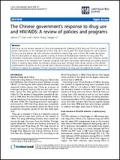
Resource | Reviews and Snapshots,
Illicit drug use has become popular in China. Acknowledging the challenge of illicit drug use, China has adopted several new policies on the management of illicit drug use in recent years. This study reviews the current policies on drug use and assesses the harm reduction interventions among drug users in China. The review documents that the new policies on drug use provide a variety of choices of detoxification treatment for drug users. The methadone maintenance treatment and needle exchange programs have been adopted as harm reduction models in China. Most of the reviewed harm reduction programs have been successfully implemented and yielded positive effects in reducing drug related risk behaviors among drug users. Although there remain barriers to the effective implementation of policies on drug use and harm reduction programs, Chinese government has shown their commitment to support the expansion of harm reduction interventions for drug users throughout the country.
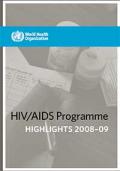
Resource | Publications,
Universal Access is more than a time-limited aspiration that expires in 2010. It is—and will remain—a unifying principle for the HIV response. Achieving and sustaining Universal Access will be pivotal to progress towards the full array of Millennium Development Goals, including Goal 6, which calls for the world to halt and begin to reverse the HIV epidemic by 2015.
A sustained response to HIV requires the engagement of all sectors of society.
This report highlights WHO's contributions towards Universal Access in 2008 and 2009. It describes how WHO works and identifies specific achievements in each of the five strategic areas. While the organization's contributions to the HIV response draw upon the initiatives and expertise of WHO's six regional and 140 country offices, as well as roughly 30 different departments within WHO Headquarters, this report focuses particular attention on achievements of the HIV/AIDS Department in the 2008–09 biennium.
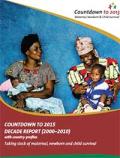
Resource | Publications,
The Countdown report for 2010 contains good news—many countries are making progress, reducing mortality and increasing coverage of effective health interventions at an accelerating pace. But the news is not all good. Many Countdown countries are still off track for achieving Millennium Development Goals 4 (reduce child mortality) and 5 (improve maternal health), and are not increasing coverage of key health interventions quickly enough. Countdown countries in Sub-Saharan Africa are especially far behind, although a few have shown improvements.
The vast majority of maternal and child deaths are preventable, but unacceptably large numbers of women, newborns and children are still dying each year in Countdown countries, where at least 95% of all maternal and child deaths occur. A growing proportion of child deaths occur in the first four weeks of life.

Resource | Publications,
In September 2000, 189 UN member states adopted the UN Millennium Declaration, formulating a series of specific goals for human development called the Millennium Development Goals (MDGs). These goals cover the economy, society, the environment and five other sectors. Most goals set 1990 as the baseline year and 2015 as the target year. The MDGs are now the most comprehensive, authoritative and clear-cut set of goals that exist towards the development of the international community.
Broadly recognized and actively supported by a wide range of parties, the MDGs have become an important standard for measuring the progress of global development and organizing international development assistance. Having set detailed targets and indicators for all the goals in the eight different areas, the UN regularly issues global progress reports that track achievements. In addition, the UN system works with member states to draft national MDG progress reports in order to raise awareness, stimulate discussion and promote further action towards implementing all goals. The Chinese Government and the UN Country Team previously drafted national reports on China’s Progress towards the MDGs in 2003, 2005 and 2008.
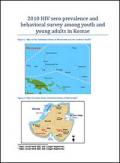
Resource | Publications,
In 2009/2010, an STI biological and behavioral survey among youth and young adults in Kosrae, in the Federated States of Micronesia was conducted. Its aims were to assess the prevalence of key STIs among adults in Kosrae as well as evaluate certain knowledge and risk behaviours in order to better identify how to deliver targeted interventions aiming to reduce risk of HIV and STI infections. 361 participants aged between 15 and 49 were recruited from Kosrae.
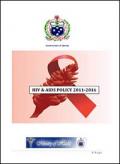
Resource | Publications,
The overall goal of the National Policy on HIV/AIDS is to provide for a framework for leadership and coordination of the National multi-sectoral response to the HIV/AIDS epidemic. This includes formulation, by all sectors, of appropriate interventions which will be effective in preventing transmission of HIV/AIDS and other sexually transmitted infections, protecting and supporting vulnerable groups, mitigating the social and economic impact of HIV/AIDS. It also provides for the framework for strengthening the capacity of institutions, communities and individuals in all sectors to arrest the spread of the epidemic. Being a social, cultural and economic problem, prevention and control of HIV/AIDS epidemic will very much depend on effective community based prevention, care and support interventions.
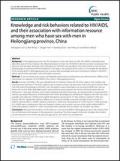
Resource | Publications,
In Heilongjiang province, the HIV prevalence in men who have sex with men (MSM) is generally lower than other part of China. However, the official perception for their risk of HIV/AIDS infection has been increasing in the province over the years. Moreover, little information on HIV/AIDS was provided to the communities so that we have disadvantage of controlling HIV/AIDS epidemic in the region. The purpose of this study is to investigate the prevalence of HIV among MSM in Heilongjiang province, to assess their knowledge levels and risk behaviors related to HIV/AIDS, and to explore their associations with information resources.
A cross-sectional study using a standardized questionnaire and blood test was administered in 2008 by local interviewers to a sample (1353) of MSM in four cities in Heilongjiang province.
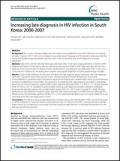
Resource | Publications,
The number of Koreans diagnosed with human immunodeficiency virus (HIV) infections is increasing annually; however, CD4+ T-cell counts at diagnosis have decreased. The purpose of the present study was to identify clinical and epidemiologic associations with low CD4+ T-cell counts at the time of HIV diagnosis in a Korean population.
Data from 2,299 HIV-infected individuals with initial CD4+ T-cell counts measured within 6 months of HIV diagnosis and reason for HIV testing were recorded and measured from 2000 to 2007. Data were selected from the database of the Korea Centers for Disease Control and Prevention. Late diagnosis was defined by CD4+ T-cell counts<200 cells/mm3. Reasons for HIV testing were analyzed using logistic regression including epidemiologic variables.
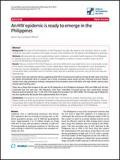
Resource | Reviews and Snapshots,
Southeast Asia is experiencing numerous and diverse HIV epidemics that are evolving at varying rates, in different population groups, and in different geographical areas. Approximately 5 to 10 million people are living with HIV in Asia, with prevalence estimates of well over 1% among adults in numerous countries. Yet there are some settings in which HIV prevalence has remained relatively very low. The Philippines is one of the exceptional countries that has not faced a large HIV epidemic. It is important to understand the reasons for the disparate nature of HIV in this country in order to ascertain whether lessons can be learnt for effective control in other settings and to ensure that a large HIV epidemic does not emerge in the Philippines.
The state of the HIV epidemic in the Philippines has been described as "low and slow", which is in stark
contrast to many other countries in the region. A review of the conditions for HIV spread in the Philippines is necessary.





